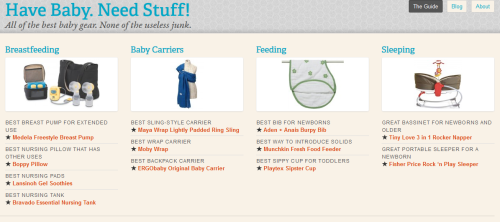Without much in the way of advertising, Underscores has become a popular choice for WordPress theme developers. To learn more about it, I asked Automattic employee, Konstantin Obenland, @obenland on Twitter, to explain what the theme is, how it got its name, and how people can contribute to the project.

Why was Underscores created and how did it get its name?
Ian Stewart tells the tale in detail in the announcement post for Underscores, but the gist of it is that Toolbox, the theme we used as a starter theme at the time, could not be updated without backwards compatibility concerns, and needed more drastic improvements. Since the fork underscores the new themes we build, we called it the Underscores Theme, or _s for short.
Without a lot of advertising, Underscores seems to be a starting point for many developers. Why do you think that is?
That is true, we haven’t done a lot of marketing for it yet. I think what developers really like is its simplicity and adherence to WordPress standards.
Underscores comes from the combined experience of building themes for millions of users on WordPress.com, and creating default themes that ship with WordPress and have to work in all environments. This is paired with excellence in theming best practices and just enough functionality, markup, and styles to get started.

When you download Underscores, there is very little to tear down or take away. You can almost immediately dive into building your theme. We put a lot of thought into keeping it as lean as possible and still do when making decisions on new features and enhancements.
Would you consider Underscores a starter theme, theme framework, or something else?
Underscores is a starter theme. It is meant to be worked with, tweaked, and styled. It is not a framework or a parent theme to be extended. It is supposed to become a theme of its own, when finished.
What is the ratio of Automattic developers contributing patches to Underscores versus contributions from the wider community?

There have been 64 contributors on GitHub so far although GitHub only counts contributors who contributed through a Pull Request. Out of those 64, less than 20 are current or former Automatticians. I don’t have stats on the amount of Issues or Pull Requests opened, but the 2:1 ratio feels true for that too, maybe even 3:1.
What projects does Automattic use Underscores for?

We use it for pretty much all projects where it makes sense to use a theme. Be it a new theme for the WordPress.com Theme Repository, a vertical like Portfolios, or a landing page for users of a certain mobile device. We even use it internally for the O2 theme, the successor of P2.
Are themes more likely to be approved in a WordPress.com theme review if Underscores is used to build the theme?
Possibly. But not for the sake of using Underscores. Rather because the code quality of those themes is more likely to meet our expectations. Themes can be based on any kind of framework or starter theme as long as the code quality is right. We certainly don’t disqualify themes for not using it.
What examples do you have of beautiful sites designed with Underscores?

There are plenty! Let’s start with Twenty Fourteen, the latest default theme. It was converted from Further, a premium theme based on _s. Every free theme and every premium theme by Automattic launched on WordPress.com in the last two years, are based on _s too. The official homepage of the Dallas Mavericks, Mark Jaquith’s Have Baby. Need Stuff!, this ebay landing page, and the Western University site are all made from _s. Not a lot of commonalities between them, even though they have the same foundation.
If you had to convince a developer to use Underscores, what would you tell them?
Take advantage of the 1000 hour head start tutorial to building your theme. Underscores is a proven, reliable foundation to start from, built with the knowledge and experience from running themes on millions of sites, and creating default themes for WordPress Core. If you feel _s is too bare bones for you or find yourself adding the same libraries every time you start a new project, fork _s on GitHub, add the desired libraries and use your fork as the starting point!
How can people get involved to help improve the theme?
We maintain _s on GitHub to make it as easy as possible for people to contribute. Involvement can range from sharing opinions about existing proposals, to creating a new issue with improvement suggestions, to opening pull requests with code changes.
What one thing do you want people to know about Underscores?
You really don’t need to know any PHP or be a programmer to be able to use Underscores. As long as you’re somewhat comfortable with CSS and some HTML, Underscores can help you build the next great WordPress theme!
Stats Related To Underscores
It’s worth noting that the following statistics are for a theme aimed at developers with little to no marketing efforts behind it.
- 185,000 recorded downloads from Underscores.me since September 5, 2012 although it’s likely 250,000 to 300,000 in total.
- A total of 15,500 downloads for all of March
- Downloaded every 3.3 minutes. This excludes zip downloads from GitHub, forks, and theme updates.
- It’s the 17th most starred PHP project on GitHub:
- It is 19th in the list of trending PHP repositories on GitHub this month.
If you’ve used Underscores for a project or client website, send us a link in the comments.
Great stuff. I love _s and it has become the base of my own personal project, called ‘Some Like it Neat. https://github.com/digisavvy/some-like-it-neat – As Konstantin notes, it’s a great project to start from and I’d say I really started to develop myself more using _s.